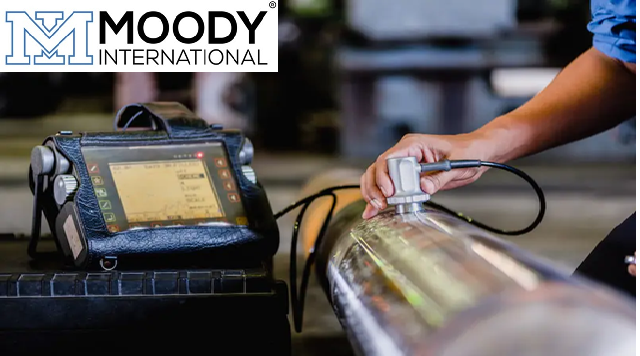
NON-DESTRUCTIVE TESTING (NDT)
Non-destructive testing from MOODY INTERNATIONAL – ensures the safe and efficient operation of your equipment and assets by detecting defects before they result in severe damage, and assures compliance with international standards.
Visual Inspection (VI)
Purpose: The purpose of visual inspection of pressure vessels is to identify the risks that can cause damage to the vessel and to identify the surface defects, irregularities, and signs of corrosion.
Process: This type of inspection is done by experienced personnel by using the naked eye, aided by tools like flash lights, mirrors, and bore-scopes.
Ultrasonic Testing (UT)
Purpose: The purpose of ultrasonic testing is to detect internal flaws in pressure vessels, the thickness of materials, measurements, and evaluate the material's sound.
Process: In this method, we use high-frequency ultrasonic sound waves that are transmitted through the material, and reflections are analyzed to identify damages and defects.
Magnetic Particle Testing (MPT)
Purpose: The purpose of magnetic particle testing of a pressure vessel is to identify surfaces and near-surface defects like cracks and discontinuities.
Process: In this method, we use magnetic particles that are applied to the surface of the pressure vessel surface, and interaction between the magnetic fields is recorded using devices that highlight defects.
Radiographic Testing (RT)
Purpose: The purpose of radiographic testing is to reveal internal structures, defecting detects, weld quality, cracks, and inclusions.
Process: In this method of radiographic test of pressure vessel gamma rays or X-rays are passed through the material and resulting images and graphs are analyzed for any irregular deformities present in the material.
Eddy Current Testing (ECT)
Purpose: Eddy's current test purpose is to detect surface defects, thickness measurements, and conductivity testing.
Process: In this method of Eddy current testing, electricity or Eddy current is passed through the material, and variations are analyzed to test the pressure vessel.
Liquid Penetrant Testing (LPT)
Purpose: The purpose of the Liquid penetrant test is to check leakages of liquid, surface breaking defects and discontinues within any pressure vessel.
Process: A penetrant is applied to the surface of the pressure vessel and after a period it is removed through the surface, if a crack is found it penetrates that crack and reveals the number of cracks and deformities within the system.
Why MOODY:
Are you in need of a quick and reliable Inspection of NDT? Our experienced inspectors are qualified and accredited to perform a wide range of inspections according to international standards. In many places across the globe, our inspectors can be on-site within 72 hours. You also have the option to add a video of your inspection for another layer of authentication. • Fast, Flexible and Transparent • Local Expertise • In-House and Accredited Technicians • Personalized Service
